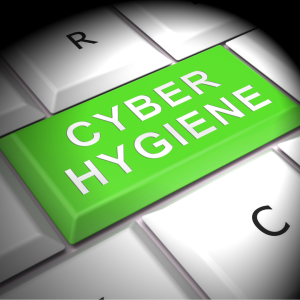Email is a vital part of our lives today, and we rely on it for most of our day-to-day communication with family, friends, and colleagues. However, with the increased usage of email, there has been a steady rise in email security threats.
Here are some of the common Email security mistakes that people make and how you can avoid them.
1. Use of Weak Passwords
The use of weak passwords is one of the common mistakes people make with email security. Most people use weak passwords that are easy to remember and easy to hack, for example, numbers, an Old school, a favorite name, etc.
Instead, one should use a strong password that is hard to guess or even crack. Password suggestion tools are handy when creating strong passwords that are hard to crack, such as hy!OG4!6943hhHT9
Also, you should avoid using the same password for multiple accounts. One should not use passwords set for one email for multiple accounts. If one of the other accounts is compromised, there is a risk of the different accounts using the same passwords being compromised too.
Tip: You can use a password manager to generate and store strong passwords for all your online accounts.
2. Falling Prey to Phishing Scams
You have, at some point, received an unsolicited email in your inbox and were tempted to click on a link to see where it leads, only for you to get hacked. Overall, phishing emails account for the most significant number of cyber-attacks worldwide.
Phishing emails are designed to look like they come from legitimate sources, and they may:
- Ask for personal or financial information
- Ask for link clicks file download
- Impersonate a reputable organization, like your bank, a social media site you use, or your workplace.
- Impersonate someone you know, like a family member, friend, or coworker.
- Look exactly like a message from an organization or person you trust.
Some of the ways you avoid falling for phishing scams should be cautious of emails asking for sensitive information,
- Opening attachments
- Clicking on links in emails or texts
- Don’t share personal information via insecure emails
Tip: Instead, contact the company directly to verify the email’s authenticity.
3. Using Unsecured Wi-Fi
With an unsecured Wi-Fi connection, there is no guarantee that the data shared is secure and cannot be accessed. Third parties can intercept data being transmitted over unsecured Wi-Fi as it is in an unencrypted form, such as services requiring login information, email, and online banking. They can then extract your login information and passwords from this intercepted data and swipe you clean.
Therefore, avoiding unsecured Wi-Fi networks for sensitive activities like email or online banking is essential.
Tip: Use a VPN (Virtual Private Network) to encrypt your data on a public WI-FI.
4. Failure to use Encryption
Encryption is an integral tool in email security, but many people need help discovering its importance and therefore do not encrypt their data. Encryption is a method of encoding data so only those with the proper decryption key can read it.
When emails are sent over an unencrypted connection, they can be intercepted by third parties who can read the contents without needing the decryption key.
Encryption is essential, especially if you send sensitive information via email, such as credit card numbers, social security numbers, or personal information.
To use Encryption, use an email client that supports Encryption, such as M@ilSafi Email Encryption. You should also ensure your email recipient uses an email client supporting Encryption. Some email clients may require installing a plugin or add-on to enable Encryption.
Tip: Ensure you use a secure connection when accessing your email accounts, such as HTTPS or SSL.
5. Leaving your Device unattended
We tend to ignore locking out machines every time we make a quick dash outside. Unattended Devices can be accessed by unauthorized persons who can steal sensitive information or install malware on your Device.
For example, leaving your email account open on a public computer can allow anyone to access your email messages. Similarly, leaving your email account logged on a shared computer or Device can compromise email security.
It is crucial to lock your Device when you are not using it and to use a strong password or PIN. You can also use a privacy screen protector to prevent visual hacking.
In addition, avoid leaving your Device in public places where it can be easily stolen. If you must go your Device in a public place, ensure it is locked and out of sight.
Tip: Secure your area, files, and equipment before leaving them unattended
6. Neglecting Software Updates
Updating your system ensures that your computer has installed the latest security patches and updates. This can help protect against known vulnerabilities and exploits.
Failure to update your email client, browser, and operating system regularly poses a severe security risk. Software updates often contain security patches. You should also periodically check for updates and install them as soon as they become available.
Tip: Enable automatic updates for your system if you are prone to forgetting about them.
7. Using Untrustworthy Email Providers
Some email providers need a better reputation for their security protocols and reliability. They need to implement adequate measures to protect their users’ information. Therefore, choosing a reputable email provider focusing on cyber security is essential.
When searching for a trustworthy email provider, find providers using encryption, two-factor authentication, and a history of protecting their users’ data.
Tip: Read reviews and compare features before choosing an email provider.
Conclusion
There are so many mistakes and risks that we are prone to commit in our day-to-day work. Avoiding the above mistakes will avert most of the hacking and vulnerabilities we currently face online. To avoid these mistakes:
- Use strong passwords
- Be cautious of phishing scams
- Use secure Wi-Fi networks
- Use Encryption
- Leaving your Device unattended
- Update your software regularly
- Use a trustworthy email provider




Pingback: Cyber Threats: Trends and Predictions for 2024